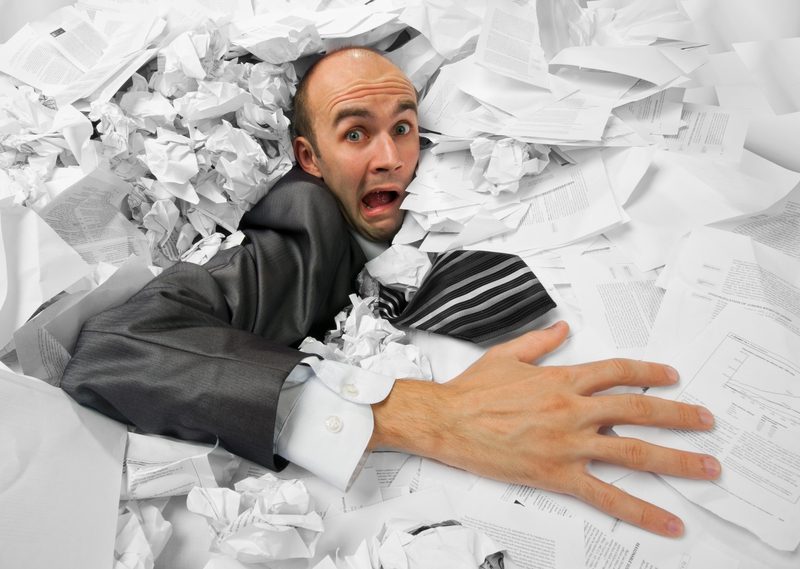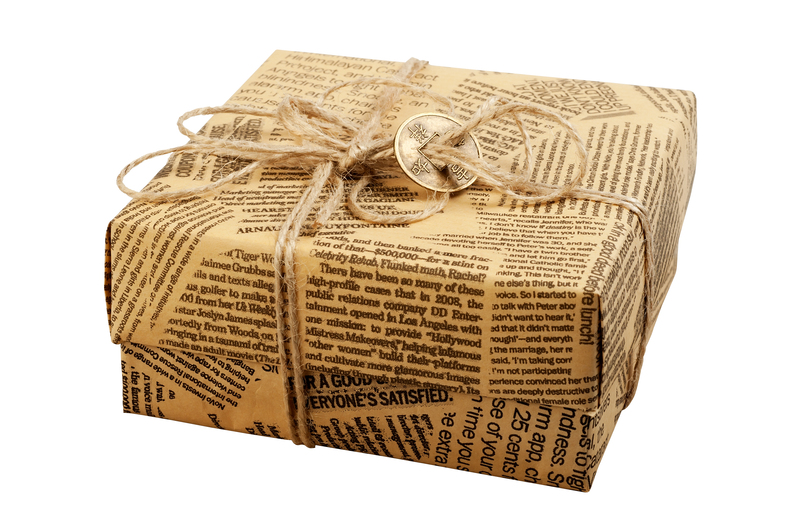Discover the Art of Eco-Friendly Packaging and Cardboard Disposal
In an era when environmental sustainability is crucial, adopting eco-friendly packaging solutions and responsible cardboard disposal methods is more than a trend--it's a necessity. Whether you are a business, an eco-conscious consumer, or simply curious about sustainable practices, understanding how to improve packaging and dispose of cardboard properly can make a significant difference in reducing your ecological footprint. Let's explore the essential strategies and benefits of opting for eco-friendly packaging and mastering the art of cardboard recycling.

The Importance of Eco-Friendly Packaging
The rise of e-commerce and fast consumerism has increased the demand for packaging materials. Unfortunately, conventional packaging often leads to excessive waste and pollution. Eco-friendly packaging and sustainable cardboard disposal aim to combat these issues by reducing environmental impact and promoting a circular economy.
What Is Eco-Friendly Packaging?
Eco-friendly packaging refers to packaging materials designed, sourced, manufactured, and recycled with minimal impact on the environment. Unlike traditional packaging that relies on plastic, single-use materials, or non-recyclable composites, sustainable packaging solutions focus on renewable resources, recyclability, and biodegradability.
- Biodegradable Packaging: Made from natural materials that easily decompose.
- Recycled Materials: Packaging derived from post-consumer waste, like cardboard and paper.
- Compostable Packers: These can return to the earth safely and enrich soil after use.
- Minimalism in Design: Reducing the amount of packaging material used and simplifying design for easier recycling.
Environmental Benefits of Choosing Sustainable Packaging
- Reduced Carbon Footprint: Using recycled or renewable materials lowers greenhouse gas emissions.
- Conservation of Resources: Less energy is consumed in producing and reusing materials.
- Less Landfill Waste: Packaging that can be composted or recycled alleviates pressure on landfills.
- Positive Brand Perception: Businesses investing in eco-friendly packaging are viewed as responsible and progressive.
Understanding Cardboard: The Sustainable Superstar
Cardboard is one of the most widely-used packaging materials due to its versatility, strength, and recyclability. Corrugated cardboard boxes, shipping boxes, and other packaging paper products are vital for the logistics and retail industry. But what makes cardboard disposal so critical?
Why Focus on Cardboard Disposal?
Despite its recyclable nature, millions of tons of cardboard end up in landfills each year. Proper cardboard disposal ensures that this valuable resource is recycled, minimizing waste and conserving raw materials. By prioritizing cardboard recycling and upcycling, you contribute to a cleaner environment and reduce overall landfill burden.
- Cardboard Recycling: Reprocessing old cardboard into new products keeps materials in circulation.
- Upcycling Cardboard: Repurposing boxes for creative and practical uses, such as storage or crafts.
- Eco-Friendly Disposal: Ensuring that contaminated or non-recyclable cardboard is handled responsibly.
Types of Eco-Friendly Packaging Materials
Creating responsible packaging starts with choosing the right materials. Here are some of the most common eco-conscious packaging solutions available today:
Corrugated Cardboard
- Highly recyclable and made largely from post-consumer waste.
- Sturdy, lightweight, and customizable for various shipping needs.
Paper-Based Packaging
- Includes envelopes, wrapping paper, and molded pulp for cushioning.
- Often fully recyclable, compostable, and made from sustainable sources.
Bioplastics and Plant-Based Films
- Made from renewable resources like corn starch or sugarcane.
- Some varieties are compostable in industrial or home settings.
Edible Packaging
- Innovative solution for food products, made entirely from food-grade materials.
- Completely eliminates waste when consumed with the product!
Reusable Packaging
- Designed for repeated use, such as cloth bags, glass jars, or sturdy shipping containers.
- Decreases the reliance on single-use packaging and promotes a sharing economy.
How to Implement Sustainable Packaging in Your Business
Businesses play a pivotal role in shaping packaging trends. Here's how your company can lead the way in sustainable packaging and responsible cardboard management:
Conduct a Packaging Audit
- Analyze your current packaging materials for recyclability, reusability, and composition.
- Identify areas where you can transition to eco-friendly alternatives.
Partner with Ethical Suppliers
- Ensure your packaging providers source materials responsibly and adhere to environmental standards.
- Look for certifications such as FSC(R) (Forest Stewardship Council) or Cradle to Cradle.
Educate Your Customers
- Clearly label recyclable or compostable packaging.
- Offer guidance on proper disposal or reuse for your customers' convenience.
Encourage Cardboard Return Programs
- Set up take-back schemes for bulk customers or encourage reuse of packaging for returns.
- Partner with local recycling facilities to facilitate easy cardboard disposal.
Mastering Cardboard Recycling: Practical Tips for Every Household
Recycling cardboard is easy at home if you follow a few simple steps. Here's how to ensure your cardboard ends up where it belongs--back in the recycling stream:
1. Break Down Boxes
Flatten your cardboard boxes to save space and allow for more efficient transport and processing at recycling centers.
2. Remove Non-Cardboard Materials
Take off any tape, labels, or plastic inserts. While small amounts are usually tolerated, too many contaminants can ruin an entire recycling batch.
3. Keep Cardboard Clean and Dry
Wet or soiled cardboard (like pizza boxes with grease) can't be recycled effectively. Compost these instead or check with your local facility for guidelines.
4. Use Local Recycling Services
Place your prepared cardboard in curbside bins or take it directly to your nearest recycling drop-off point. Some municipalities even offer special collection days for bulk cardboard.
Creative Ways to Repurpose Cardboard and Packaging
Besides sending boxes to the recycling bin, upcycling cardboard is a fantastic way to minimize waste and stimulate creativity. Here are some innovative ideas:
- Storage Solutions: Use boxes for organizing closets, garages, or classrooms.
- Arts and Crafts: Cardboard is the perfect base for DIY projects for both kids and adults.
- Gardening: Use flattened boxes as weed barriers in your garden beds.
- Shipping and Gifting: Reuse sturdy boxes for mailing packages or wrapping gifts.
Looking for inspiration? Cardboard disposal doesn't always mean recycling--sometimes, the best solution is reuse.
Cardboard Disposal: What Not to Do
Even with the best intentions, mistakes happen. To ensure your cardboard waste is managed responsibly, avoid the following pitfalls:
- Don't Burn Cardboard: Burning releases toxins into the air and contributes to air pollution.
- Don't Leave Boxes Outside: Exposure to rain or moisture makes cardboard unrecyclable, and attracts pests.
- Avoid Overfilling Bins: This makes collection harder and can result in spillage and littering.
- Don't Mix with Non-Recyclables: Plastic bags, Styrofoam, or food residues contaminate recyclable loads.
The Road Ahead: Trends in Eco-Friendly Packaging and Disposal
The packaging landscape continues to evolve as innovation and public awareness rise. Here are some of the most promising trends:
- Smart Packaging: Incorporates QR codes or digital watermarks to provide consumers with disposal instructions.
- Compostable Mailers: Shipping envelopes made from cornstarch or mushroom-based materials.
- Bulk Refill Programs: Retailers are encouraging shoppers to bring their own containers for refills, minimizing single-use packaging.
- Government Regulations: Many regions are introducing bans on unrecyclable packaging and offering incentives for sustainable solutions.

Getting Involved: How Consumers Can Lead the Change
Every individual has a role to play in advancing eco-friendly packaging and responsible cardboard disposal. Here's how you can make an impact:
- Choose Green Brands: Support businesses that use recyclable or compostable packaging.
- Adopt Minimalism: Buy in bulk when possible, and avoid over-packaged items.
- Ask for Change: Encourage your favorite retailers to improve their packaging practices.
- Educate Others: Share your knowledge about cardboard recycling and sustainable packaging with friends, family, and coworkers.
Conclusion: Embrace the Art of Sustainable Packaging and Cardboard Disposal
The journey toward a greener world starts with everyday choices. By opting for eco-friendly packaging and handling cardboard disposal responsibly, you are reducing waste, saving resources, and setting a powerful example for others to follow. Remember, each box recycled, and every sustainable package chosen helps build a healthier planet for future generations.
Join the movement--discover the art of sustainable packaging and responsible cardboard disposal today, and inspire others to do the same for a brighter, greener tomorrow.